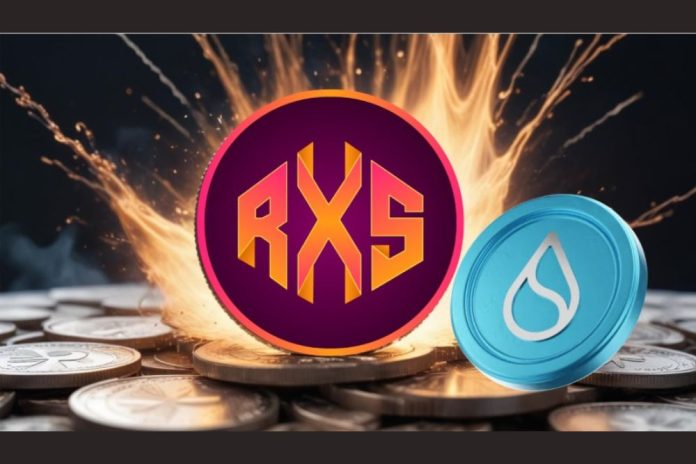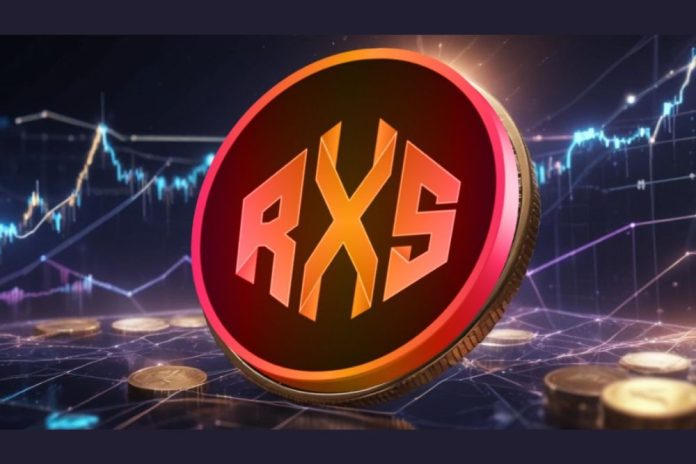Trump Issues Currency: The "Sovereign Transfer" of Crypto
Trump opened a new chapter in the crypto world by issuing tokens, marking a deep integration of cryptocurrency with American political power. This move not only highlights the Trump family's interest in the crypto space but also reflects the trend of "sovereignty transfer" in cryptocurrency. Leveraging their strong media influence, the Trump family has reshaped public perception of digital assets through tokens and crypto assets.

Author: YBB Capital Researcher Zeke
Introduction
On the eve of the U.S. presidential inauguration, on the evening of January 17 local time, Trump announced the launch of his personal token—TRUMP Coin—through his own social media platform, Truth Social. Initially, many people mistakenly believed that this move was the result of Trump's account being hacked, but minutes later, Trump confirmed the authenticity of the news by retweeting promotional information about the token from his personal main account on X (formerly Twitter).
What followed was a surge that would go down in cryptocurrency history, with massive amounts of capital pouring in. TRUMP's market value skyrocketed from zero to a peak of $80 billion in just two days, almost completely siphoning off all market liquidity. The reach of this event was as extensive as the assassination attempt Trump experienced last year in Pennsylvania, and its surreal nature was akin to him dodging that bullet. I have some simple thoughts to share regarding this event.
Meme
In the Eastern country where I reside, the ultimate monetization of private traffic often occurs through a live-streaming e-commerce app called "Douyin." Meanwhile, across the Atlantic, the 47th President of the United States has done something unprecedented: the leader of the "world lighthouse" is measuring his influence and power through an electronic token, accumulating vast wealth for his family. Undoubtedly, we are entering a special era, an era where Crypto can officially be referred to as Web 3.0.
The original intention of the internet was to end the monopolization of attention economy by broadcasting stations and television networks and to return everything to users, but ultimately, its development path has deviated from the original route. The early internet companies that held chat platforms and search engines in Web 2.0 have evolved into the giants we see today, such as Google and Tencent, which have completed their original accumulation and achieved long-term monopolies by controlling a large number of traffic entrances. Nowadays, ByteDance almost dominates social media in both the East and West. While it is undeniable that short video platforms have provided many grassroots individuals with opportunities to turn their fortunes around, this benefit is still largely shared between internet celebrities and platforms, with the platforms holding absolute discourse power.
Regardless of how the forms change, the eternal theme surrounding traffic and monopoly remains the same for Web 2.0 giants. The opportunities for ordinary people to benefit from this are very limited; users in this feast can only continuously contribute traffic and money. Meme Coins might represent a new opportunity. Indeed, participating in Meme PVP is dangerous, and it is not without scams, and one may have to accept an absolutely unfair distribution like TRUMP's 20:80 split, but how many opportunities do ordinary people have to benefit from the traffic of the U.S. President? The process of TRUMP going from 0 to 80 might be the only chance.

In the past, I struggled to explain what Meme Coins really are, but now I feel that a few simple sentences can clarify it: the value of a Meme is the pricing of a certain event, person, or meme at a specific time, just as the market's initial pricing for President Trump was $80 billion a few days ago. On the other hand, Memes also represent a division of the traditional internet attention economy; people are keen on things that can capture their attention, and Memes provide users with an opportunity to participate in value distribution during hot events.
Pump

I once mentioned in a previous article that the best form of SocialFi is not a Dapp like Friend.tech with its rigid rules, but rather Pump. The coin issuance team behind the president also chose Pump. The reason is simple: people have a need to belong to a certain group, but that does not mean they should accept unfairness for that need. The pricing of Keys in Friend.tech and the subsequent complex gameplay surrounding Tokens are the main reasons for its limited ceiling and eventual failure. Looking back at past SocialFi projects, dividing people into different tiers based on Token holdings to allocate empowerment and services has also been a reason for their downfall.
Small and refined never applies to Crypto that relies on community culture, and this point is applicable in many fields beyond SocialFi, such as the NFTs that Trump has previously issued. The large supply of Memes often allows them to quickly amass a giant community; whether you hold $100 worth of tokens or $10,000 worth, you belong to this group.
In the past, we needed to promote a project on social media through Twitter and then guide users to Telegram or Discord to build a community. In the more distant past, for ancient Memes like Doge, you could only seek out "organizations" through forums. Pump integrates the advantages of traditional social media based on AMM and returns the rule-setting power to the Creator, which is the main reason for its success. It compresses countless fitting processes, and you can always find a sense of belonging behind the countless token icons on the Pump homepage.
Retro Trend
Regardless of how you view Trump's issuance of a personal token, we are entering an era where Memes become mainstream and various things are tokenized. In fact, this is somewhat similar to what I mentioned last year in my article on stablecoins regarding the minting rights in medieval Europe. Compared to the unified currency system implemented by various dynasties in China most of the time, Europe has always been a bulk style, where countries and even various nobles and bishops have the right to mint and issue their own currency.
Although TRUMP is not essentially a practical currency backed by gold and silver, the president has opened this precedent, and many celebrities in Europe and America will inevitably join this medieval retro trend. Another point worth pondering is that Trump holds 80% of the tokens. Will this token truly become a pure Meme, as stated on its official website, "Trump Memes are intended to express support and participation in the ideals and beliefs embodied by the symbol '$TRUMP' and associated artworks. They are not intended to be, nor should they be viewed as any form of investment opportunity, investment contract, or security"? Or will it become an asset for monetizing power?
Among various conspiracy theories, I tend to view this as a grand beginning for the TRUMP family to completely shift from real estate to crypto, utilizing the influence of media is an ability ingrained in the DNA of this family. An absurd event can quickly generate momentum, and choosing Meme as the starting point is fitting, as it encompasses various attention-grabbing wealth myths and contrasts sharply with the president's elevated status. I believe that most of the remaining tokens (according to the token release chart, perhaps for three purposes) could be airdropped to voters, donated to pay off U.S. debts, or used for construction. All of these would help solidify Trump as a cultural totem in America and reverse the public's stereotype of Crypto after the FTX incident. The family's transition from industrial capital will begin with this nearly $100 billion IP. (According to reports from Jinshi, Trump seems to have a limited understanding of the family's crypto projects and his own token, further confirming that it is the team behind him and his children operating around the Trump IP.)
Ethereum
Solana is undoubtedly the biggest winner of this crypto weekend, achieving new highs in SOL prices and setting multiple historical records for daily trading volume, surpassing Ethereum by several times. In contrast, the Ethereum community appears very desolate, with increasing protests from core OGs against the Ethereum Foundation and the developments surrounding Layer 2.
However, judging by the soaring transaction fees and failed transaction volumes of Solana, crypto is still some distance away from true mass adoption. Therefore, regarding Ethereum, I maintain the same viewpoint as before: the route of advancing Layer 2 is simply too fast and too ahead of its time. Within the entire Ethereum ecosystem, there is almost no social heat that can compete with Solana; yes, even Base is extremely weak. The small, high-frequency demands of Layer 1 have completely shifted to Layer 2, yet Layer 2 Dapps have not seen any breakthroughs, leaving a large amount of idle block space unattended, with transaction fees pitifully low. This is the current state of Ethereum and also a reflection of the once-promising ETH Killers.
The paradox of public chain development is not limited to the triangle problem; behind the triangle problem lies the conflict between gas revenue and technological development. To put it in very simple terms, Ethereum can be likened to a casino that requires an entrance fee. In the past few years, business was booming, and the entrance fee was in high demand, even leading some to continuously raise prices for investment. The price of this ticket began to rise continuously. The owner realized that the casino was indeed not big enough, so they built a 100-fold larger casino, and under this scale, they reduced the entrance price by 100 times, allowing one ticket to be used for 100 entries. However, they found that the number of customers remained the same, and the existing facilities did not require such a large space, causing ticket prices to start to decline.
This illustrates the conflict between Ethereum's technological advancement and token prices. Additionally, Ethereum has never relied on social media influence but rather on the moat accumulated from the ICO era to DeFi Summer, so the lack of fresh blood continues to amplify.
In addition to the urgent need for reform within the foundation (which I discussed in my article "Why the King of Shanzhai is in a Dilemma"), how to gain an advantage on the social level (making it easier for users to understand various obscure technical concepts of Ethereum, integrating more into traditional social media), how Layer 2 can better respond (buybacks, modifying DA pricing, ecological feedback to the main chain), and how to better support the development of emerging Dapps (Ethereum Grants should no longer focus solely on infrastructure projects, and various L2s should have better interoperability and compatibility) are all stagnating at the application level. In public chain competition, the details and differentiation often matter.
Crypto 2.0
Trump has ushered in the 2.0 era, and the next era of crypto will also be influenced by this family. What do they want to do? Currently, the family's first launched project, World Liberty Financial (WLFI), has not yet gone live, but we can glean some insights from the proposal forum of this project. The first proposal describes:
The WLFI protocol will provide liquidity for Ethereum (ETH), Wrapped Bitcoin (WBTC), certain stablecoins, and possibly other digital assets. WLFI will allow users of the WLFI protocol to access the Aave instance of the WLFI protocol, which will be managed through Aave's risk management system. WLFI aims to introduce a new class of users into over-collateralized lending, which is one of the most important functions of decentralized finance (DeFi). WLFI plans to attract new users into the DeFi space by providing a seamless experience for supplying and borrowing digital assets. Many of these users will be first-time DeFi users, which will help build brand loyalty and recognition for WLFI and Aave, assisting Aave in maintaining its market leadership in the digital asset lending and supply space.
Initially, the WLFI protocol will allow USDC, USDT, ETH, and WBTC for lending. More assets may be added in the future through WLFI voting proposals.
WLFI will adopt the same reserve ratio system as the main Aave instance in this Aave V3 instance. AaveDAO will receive 20% of the protocol fees generated by the WLFI Aave V3 instance and will receive approximately 7% of the total circulating supply in $WLFI tokens to participate in future WLFI governance processes, liquidity mining, and promote the decentralization of the WLFI platform. Revenue distribution will be set through a trustless smart contract that directs the corresponding percentage of protocol fees to the AaveDAO treasury and WLFI treasury addresses.
Considering the recent large purchases of various project tokens, WLFI seems to be an on-chain lending institution created by Donald John Trump Jr. using his father's influence. Selling WLFI tokens with one foot while buying value coins with the other (if a large project invests, WLFI's strategy of using both feet can be even more effective), directly spiraling upwards. In addition, WLFI is also aggressively purchasing various domain names. According to information posted by Cointelegraph on Twitter, WLFI has already acquired daolationship.eth, yatogame.eth, WorldLiberty.eth, trumpcoin.eth, erictrump.eth, barrontrump.eth, and 9290.eth. From this, it is not difficult to see that the future main theme of the Trump family will still revolve around the TRUMP IP, but the fields of involvement will be quite broad. In the next four years, the Trump family's projects may exist across various public chains, much like the Trump Group's real estate scattered throughout New York today.

As the curtain slowly falls, a very special era is about to arrive. Whether you accept this "crypto president" or not, it must be acknowledged that many significant events that will influence Crypto in the next four years will occur across the Atlantic, and what Crypto can do is either follow or undergo a rebirth that allows it to happen worldwide.
Disclaimer: The content of this article solely reflects the author's opinion and does not represent the platform in any capacity. This article is not intended to serve as a reference for making investment decisions.
You may also like
FX Guys’ Path to $1 Is Clearer Than Ever – Are You Ready?

Sui (SUI) Investors Pivot to $0.175 Altcoin Set to Rise 20x-30x in 2 Months

Retail and Whale Investors back This Crypto Presale as an Unmissable Opportunity in 2025

What Goes Into A Reserve: Most People Won't See A Difference
